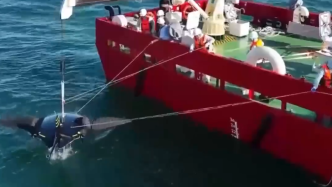
Recently, a bionic submersible, developed by the autonomous underwater vehicle team of the School of Navigation at Northwestern Polytechnical University, has realized for the first time the monitoring of the growth of coral reefs in my country's South China Sea by a bionic submersible.


At present, the manta ray-like submersible has performed many tasks, including long-distance gliding and in-situ concealed detection, high-bioaffinity and low-disturbance coral reef ecological monitoring, wide-area or fixed-depth or resident hydrological collection, and alternative protection of rare animals in oceanariums. It has completed more than 200 operations in total, achieving a breakthrough in the technological application of my country's bionic underwater equipment towards practical application.